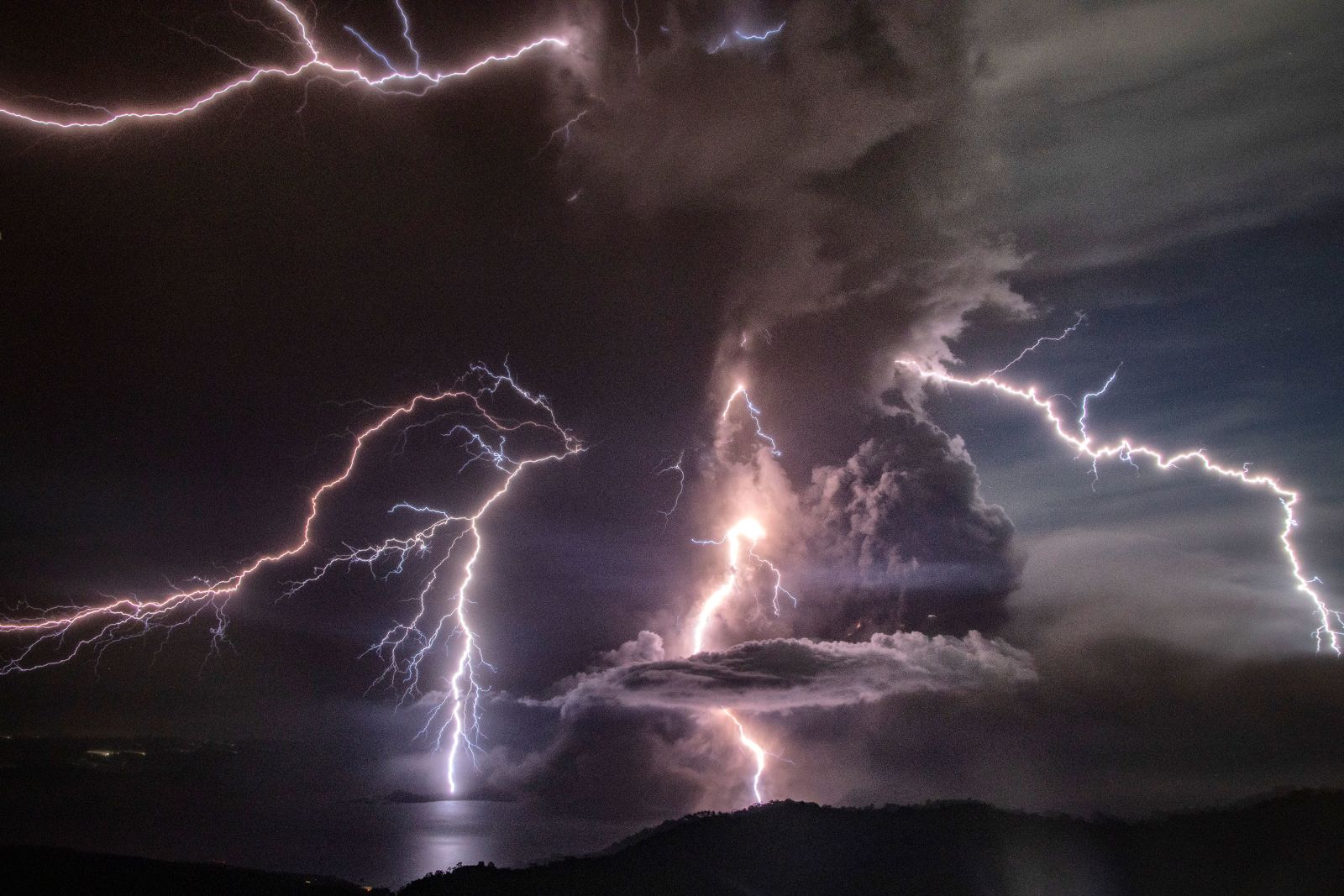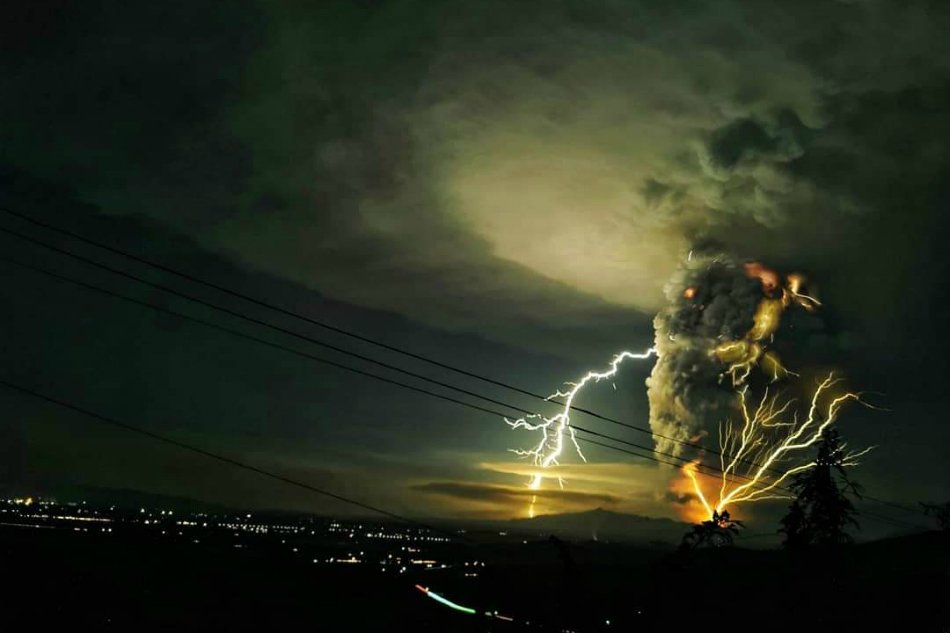Taal Volcano in the Philippines is erupting for the first time since 1977. It sent an eruption plume a kilometer above the crater, according to the Philippine Institute of Volcanology and Seismology. The agency says Taal is showing a “fast escalation” in volcanic activity and could erupt lava within weeks. Evacuation orders have been ordered for three towns in Batangas, Luzon.
As this story progresses, I will include links as to how you can help some of the displaced families. Until the all clear is given, which may be weeks, thousands of people have been evacuated from the 14km exclusion zone. They will need food, water and shelter.


Updates on Taal activity can be found at The Philippine Institute of Volcanology and Seismology (PHIVOLCS)

Taal Volcano
(Filipino: Bulkang Taal) is a complex volcano located on the island of Luzon in the Philippines. It is the second most active volcano in the Philippines with 35 historical eruptions. All of these eruptions are concentrated on Volcano Island, an island near the middle of Taal Lake. The lake partially fills Taal Caldera, which was formed by prehistoric eruptions between 140,000 and 5,380 BP. Viewed from the Tagaytay Ridge in Cavite, Taal Volcano and Lake presents one of the most picturesque and attractive views in the Philippines. It is located about 50 kilometres (31 miles) south of the capital of the country, the city of Manila.
The volcano has had several violent eruptions in the past, causing loss of life in the island and the populated areas surrounding the lake, with the death toll estimated at around to 6,000. Because of its proximity to populated areas and its eruptive history, the volcano was designated a Decade Volcano, worthy of close study to prevent future natural disasters. All volcanoes of the Philippines are part of the Pacific Ring of Fire.

The Origin of Taal Volcano (Tagalog Myth)
In Philippine Mythology there are several interesting stories that give the origin of specific mountains and volcanoes. Here one encounters a variety of stories from all parts of the country, for it seems that imaginative Filipinos have woven legends about every mountain and hill in their region. To cite a few: Mount Mayon in Bikol region, Mt. Apo in Davao, Kanlaon Mountain in Negros, Mt. Arayat in Pampanga, Mt. Banahaw in Quezon Province, Mt. Malindig in Marinduque, Pulong-Bato in Zamboanga, Mt. Pinatubo in Zambales, Pito Pangkat (Seven Stairs Mountain) in the Cotabato plains, Magsanga Mountain in Leyte, Madadalpong Mountain in Kalinga, Mt. Naapog in Mindoro, Pico de Loro Mountain in Cavite, the Sacred Mountain (Mt. Mopo) in Lanao, and the Diwata Mountain in Mindanao. A motif that is found in a few of these legends is that of a mountain or volcano rising from the common grave of faithful lovers. In the case of the Taal Volcano in Batangas, the origins follow motifs more in the “disobedience” or “punishment” realms. The following myth has evolved over time, since tobacco was not introduced to the Philippines until the 16th century, but like the myths of Mt. Arayat in Pampanga, there was a guardian of the mountain who set clear boundaries for the people benefiting from its bounty.
Many years ago there lived on the mountain of Taal an old man whose name was Nuno. His house was on the topmost part of the mountain. He was so kind to the natives that they did not fear him. He allowed them to plant tobacco and other plants on the side of the mountain. As Nuno was the one who took care of the plants, they grew very well. The natives were allowed to have all the tobacco raised on the sides of the mountain; but Nuno told them only that above a certain line around the top of the mountain no tobacco should be planted. All obeyed the will of the old man. The tobacco fields extended from the very bottom to the boundary line at the top of the mountain. The natives became wealthy and prosperous on account of raising tobacco.
Once Nuno called a meeting of all the tobacco growers. He delivered a farewell address in which he stated that he was going to be absent from the mountain for a long time. He also said that the natives could continue planting tobacco on the mountain side; but he emphasized the fact that no one should extend his field beyond the boundary line, and that a violation of his order would mean the confiscation of the fields, and of all the tobacco. Then he went to an unknown land.
A very long time passed, but Nuno did not return. The natives made inquiries about him, but no one could tell what had become of him. As the price of tobacco at that time was very high, the farmers were tempted to plant on the forbidden ground. One year passed again, but nothing happened to the disobedient farmers. But one day, while they were celebrating a fiesta in the house of Nuno, a violent earthquake occurred. The natives were so terrified that they left the mountain. After a few days, they were surprised to find out that all the plants that were growing on the mountain had disappeared. The part of the mountain above the former boundary line flew high up in the air. An immense hole was formed from which smoke began to come out from that time on. Nuno kept his word and confiscated all the tobacco for his own use. Barrios have sprung up again at the bottom of the mountain, but no plants can be grown along its sides. The descendants of the disobedient farmers may be waiting anxiously for the return of Nuno, but they have to wait until he finishes smoking all his tobacco.

SOURCE:
Fansler, Dean S. (1922). Manuscript Collection of Philippine Folktales, “Tagalog Folktales.”
ALSO READ: Legends of Mount Kanlaon, Negros Island | Negrense Mythology
Jordan Clark is a Canadian born descendant of Scottish immigrants living on the homelands of the Lekwungen speaking peoples. His interest in Philippine myth and folklore began in 2004. Finding it difficult to track down resources on the topic, he founded The Aswang Project in 2006. Shortly after, he embarked on a 5 year journey, along with producing partner Cheryl Anne del Rosario, to make the 2011 feature length documentary THE ASWANG PHENOMENON – an exploration of the aswang myth and its effects on Philippine society. In 2015 he directed “The Creatures of Philippine Mythology” web-series, which features 3 folkloric beings from the Philippines – the TIKBALANG, KAPRE and BAKUNAWA. Episodes are available to watch on YouTube. Jordan recently oversaw the editing for the English language release of Ferdinand Blumentritt’s DICCIONARIO MITOLÓGICO DE FILIPINAS (Dictionary of Philippine Mythology) and is working on two more releases with fellow creators scheduled for release later this year. When his nose isn’t in a book, he spends time with his amazing Filipina wife of 20 years and their smart and wonderful teenaged daughter.


